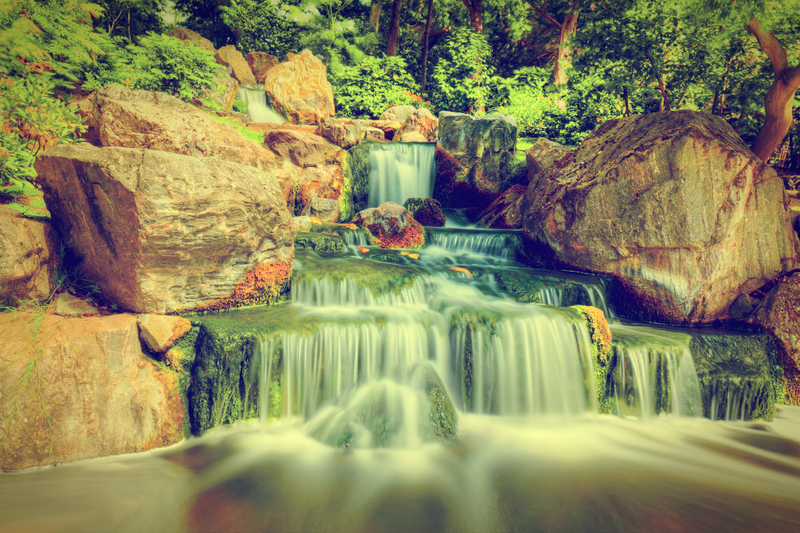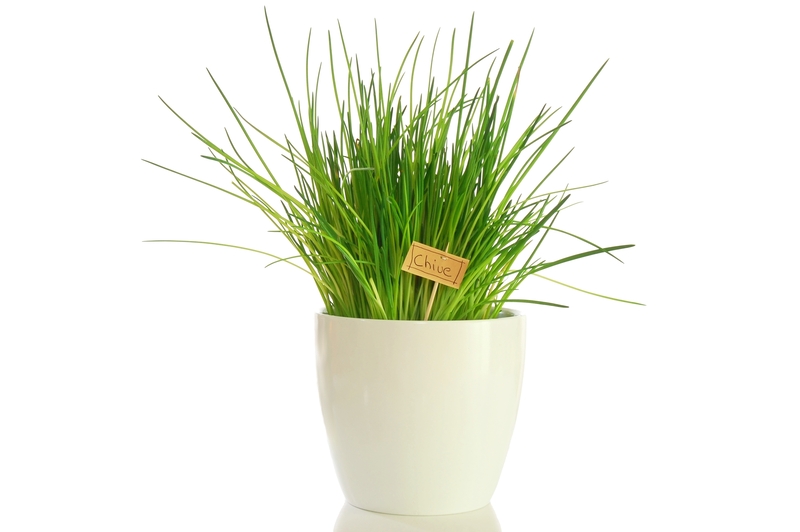Crafting an outdoor space perfect for pets and plants
Posted on 24/06/2025
Crafting an Outdoor Space Perfect for Pets and Plants
Designing an outdoor area that caters to both pets and plants can be a rewarding challenge. As more people value eco-friendly living and pet ownership grows, the desire to have a sanctuary where furry friends and lush greenery coexist has never been stronger. In this comprehensive guide, discover how to create an outdoor space that is both pet-friendly and a haven for your favorite flora. Whether you have a spacious backyard or a compact balcony, these strategies will help you forge a harmonious outdoor retreat.

Why Combine Pet-Friendly and Plant-Loving Spaces?
Many pet owners also have a passion for gardening. However, balancing the needs of both plants and pets requires a thoughtful approach. Not all plants are safe for animals, and energetic pets can inadvertently damage delicate greenery. By crafting an outdoor space that's thoughtful about both inhabitants, you'll create a vibrant, safe, and peaceful environment for everyone to enjoy.
Planning Your Outdoor Haven
Before you start planting or purchasing pet accessories, take time to plan your space. A little foresight ensures that both your pets and your plants can thrive side by side.
- Assess Your Space: Evaluate the amount of sunlight, shade, and shelter your area receives.
- Understand Your Pets' Habits: Does your dog love to dig, or is your cat an avid climber?
- Research Suitable Plants: Many common plants are toxic to pets--knowledge is key.
- Prioritize Accessibility: Ensure your pets can roam freely without damaging the plants or getting hurt.
Factors to Consider
When crafting an outdoor space for pets and plants, the following elements are important:
- Safety: Make sure all aspects of the garden are non-toxic and hazard-free for pets.
- Durability: Select materials and plants that can withstand a bit of roughhousing or digging.
- Enrichment: Create features to mentally and physically enrich both pets and yourself.
- Harmony: Design the space so both plants and pets have areas to call their own.
Pet-Safe Landscaping: Laying the Groundwork
Success starts from the ground up. The right surfaces and materials contribute to a safe, pet-friendly garden while supporting healthy plant growth.
Pet-Friendly Surfaces
- Grass: Traditional lawns offer a soft, cool space for pets to play. Choose tough, pet-resistant grass varieties like Bermuda or Fescue.
- Mulch: Wood or bark mulch can be safe, but avoid cocoa mulch, which is toxic to dogs. Consider pea gravel or stone for easy maintenance.
- Artificial Turf: For urban spaces, pet-friendly artificial turf resists digging and urination damage while staying green all year.
- Paving: Smooth stone or brick paths add structure while being gentle on paws.
Paths and Pet Trails
Dogs and cats naturally carve out preferred routes. Incorporate clear walking paths using safe, non-slip materials. These not only guide your pets through the garden but also minimize trampling of your cherished plants.
This Season's Best Pet-Friendly Plants
The heart of any outdoor haven for pets and plants is, of course, the greenery. Here's how to choose beautiful, robust plants that won't harm curious companions.
Pet-Safe Plant Choices
- Herbs: Rosemary, thyme, and basil add fragrance and flavor while being harmless to pets. (Always double-check for your specific pet species.)
- Ornamentals: Sunflowers, marigolds, and snapdragons create a riot of color and are non-toxic to dogs and cats.
- Grasses: Ornamental varieties like blue fescue or carex offer year-round texture and cover for playful pets.
- Vegetables: Lettuce, carrots, and zucchini can be safely grown alongside areas your pets frequent.
Plants to Avoid
Avoid these common but hazardous plants in shared spaces:
- Lilies (toxic to cats)
- Azalea and rhododendron
- Foxglove
- Sago palm
- Oleander
- Castor bean
For a comprehensive list of safe and toxic plants for pets, see resources like the ASPCA or consult with your veterinarian.
Designing Pet Zones and Plant Sanctuaries
Balance is essential when creating outdoor spaces perfect for both pets and plants. Designate separate areas or flexible shared spaces depending on your needs and the size of your garden.
Pet Play Areas
- Shaded Napping Spots: Trees, pergolas, or sun sails can create cool zones for pets to rest on warm days.
- Digging Pits: For dogs that love to dig, offer a sandy 'dig zone' filled with toys to keep them away from plant beds.
- Exercise Spaces: Open grassy patches or obstacle courses foster healthy activity.
- Water Stations: Always supply cool, fresh water via dog-sized fountains or pet bowls.
Plant-Only Corners
- Raised Beds: Elevated planters protect delicate roots from being trampled or dug up.
- Decorative Fencing: Low garden fences or decorative stones can gently indicate off-limits areas for pets.
- Vertical Gardens: Embrace wall planters or flower stands to maximize green space and minimize paw traffic.
Shared Interactive Features
- Sensory Gardens: Plant beds filled with pet-safe, aromatic herbs (like catnip, mint, or lavender) delight both people and pets.
- Water Features: Bubbling fountains or shallow ponds provide drinking spots and a playful environment.
- Outdoor Furniture: Choose pet-resistant options with washable covers so both you and your pets can lounge together.
Safe and Stylish Garden Accessories
The right accessories elevate outdoor living for both pets and plants.
Avoid Harmful Chemicals
- Pesticides and Herbicides: Choose organic or natural treatments whenever possible. Chemical residues can harm pets and destroy beneficial insects.
- Mulch: Stick with pine, cedar, or cypress mulch; avoid cocoa hull mulch due to its theobromine content, which is toxic to dogs.
Pet-Specific Additions
- Pet Tunnels and Hideouts: Fun structures allow pets to express their natural instincts while adding whimsy to the garden.
- Climbing Posts: Cats benefit from vertical climbing surfaces and perches.
- Dog-Friendly Toys: Secure toys in designated areas to promote positive play away from delicate plants.
Plant Enhancements
- Soil Protection: Netting and decorative stones help prevent pets from digging in plant beds.
- Planters and Pots: Moveable plant containers allow you to rotate flora according to sunlight and pet activity.
- Smart Irrigation: Drip systems or soaker hoses keep watering efficient without creating muddy puddles.
Maintenance Tips for a Lush and Safe Outdoor Space
Regular care is crucial for maintaining a flourishing outdoor retreat that continues to be safe for pets and plants.
Routine Checks and Tasks
- Inspect Plants: Watch for signs of disease, pests, or damage from playful pets.
- Repair Paths: Quickly fix stones or pavers that have become unstable to prevent trips and paw injuries.
- Clean Water Bowls: Replace outdoor water daily, checking for debris or algae growth.
- Remove Waste: Scoop pet waste frequently to prevent lawn burn and keep the landscape fresh.
Seasonal Adjustments
- Summer: Deepen shade and add water features to combat heat for both flora and pets.
- Fall: Mulch beds and install wind barriers as protection against cooler temperatures.
- Winter: Use raised planters for winter greens; clear snow or ice from pet paths.
- Spring: Prune plants, check fencing for repairs, and reseed lawns as necessary.

Common Mistakes to Avoid
Creating a pet-friendly plant paradise requires attention to detail. Here's how to sidestep the most frequent blunders:
- Ignoring Toxicity: Never assume a plant is safe--always check authoritative sources before planting.
- Overlooking Escape Routes: Ensure fencing is secure and tall enough so pets can't wander off.
- Underestimating Digging or Climbing Needs: Cater to your pets' natural behaviors with dedicated zones.
- Too Much Lawn, Too Few Features: A garden that's just grass and nothing else won't enrich your pet or support plant variety.
- Improper Use of Chemicals: Use only pet-safe fertilizers, feeds, and pest treatments.
Conclusion: A Shared Sanctuary for Pets and Plants
Crafting an outdoor space for pets and plants is both an art and a science. By blending knowledge of pet behavior, horticulture, and design principles, you can cultivate a landscape that's safe, beautiful, and engaging. With careful plant selection, thoughtful zoning, and ongoing maintenance, your backyard, patio, or terrace will bloom as a shared sanctuary.
Remember, the perfect outdoor retreat for your pets and plants must be adaptable. As the seasons change and your pets' preferences evolve, continue to tweak your garden for maximum enjoyment. The result will be an outdoor extension of your home--where tails wag, flowers flourish, and everyone finds a little piece of paradise.
Key Takeaways:
- Plan and research for safety and enrichment.
- Select pet-safe plants and avoid common toxins.
- Designate zones for play, rest, and growth.
- Choose durable, non-toxic materials throughout.
- Regularly maintain for ongoing harmony and beauty.
Ready to start crafting your outdoor space? Use these tips and let your pets and plants thrive together in a lush, living landscape!



